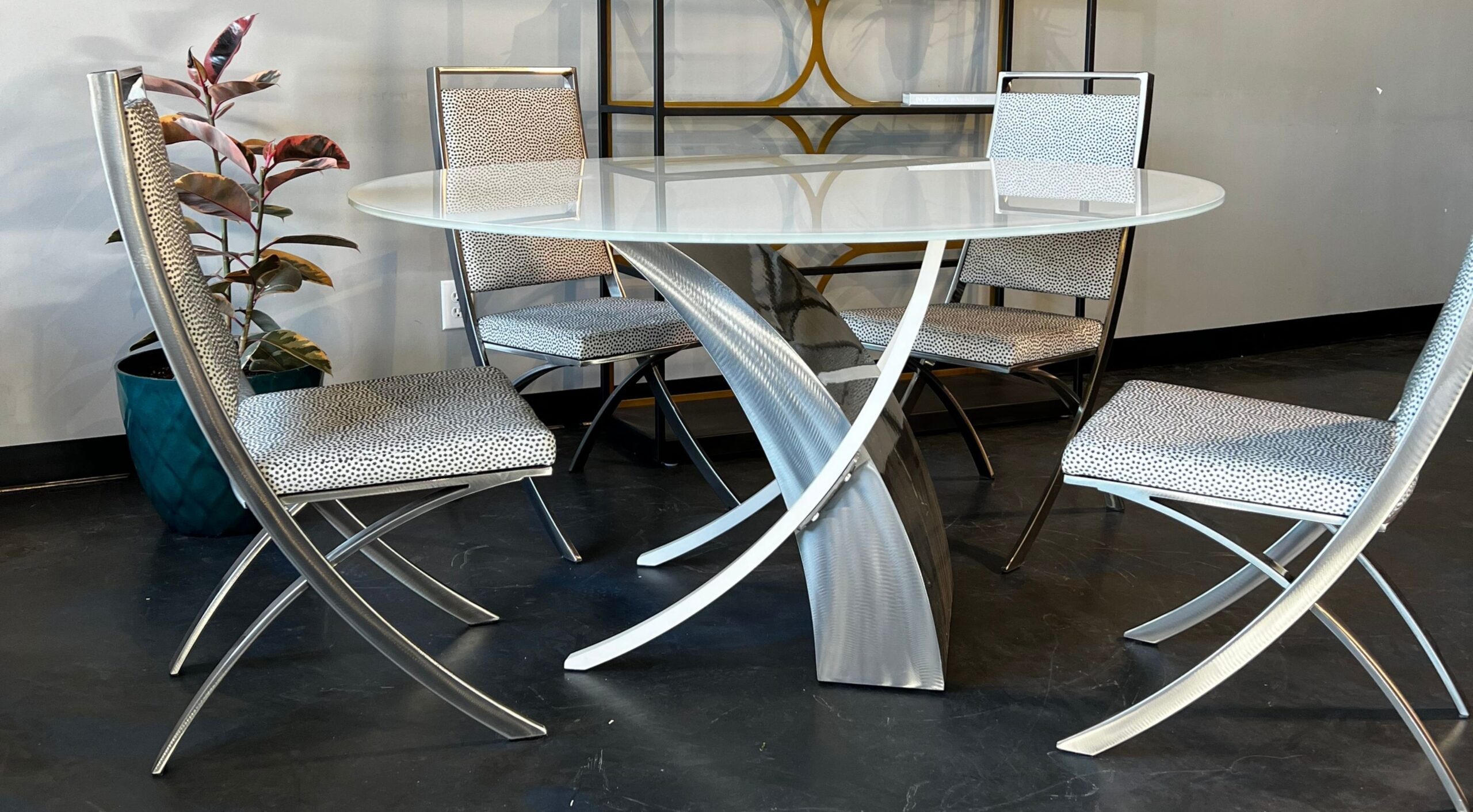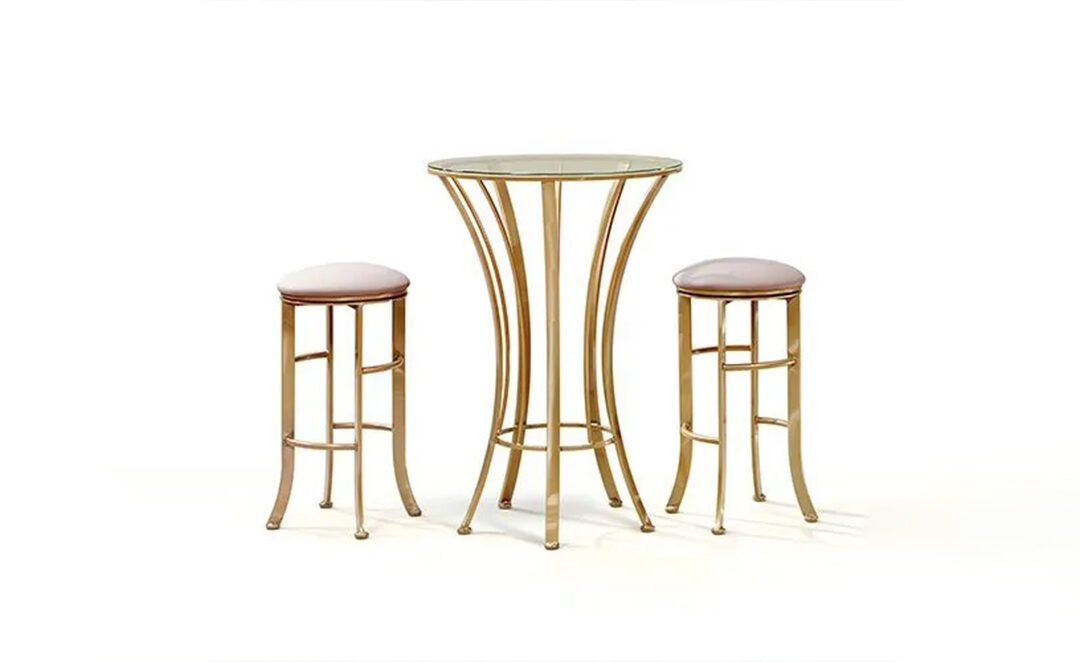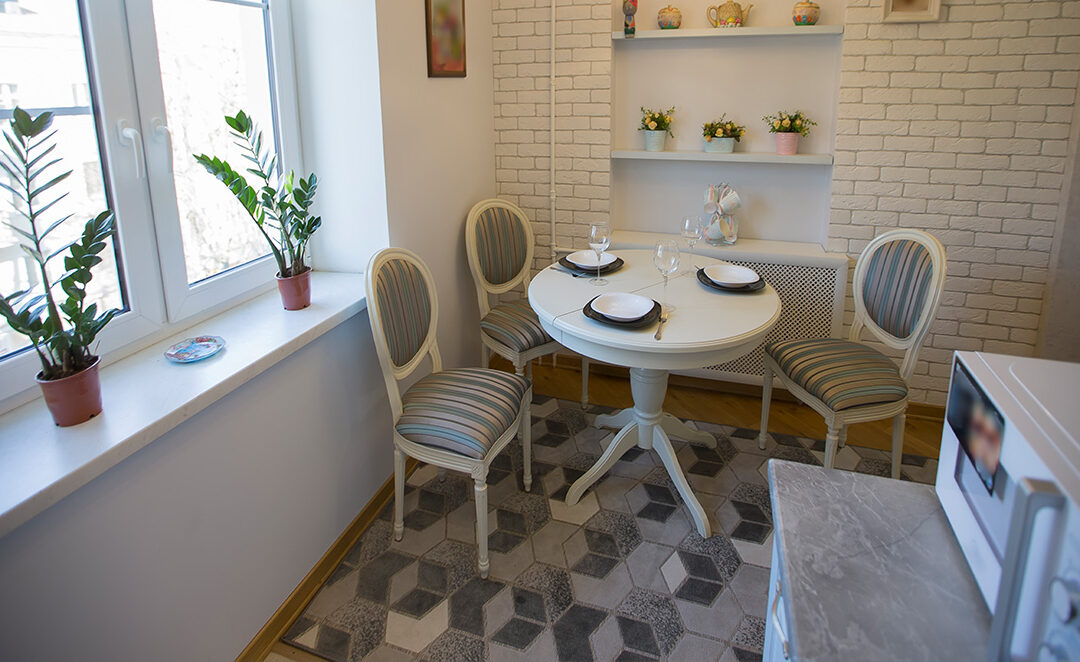No matter if you are upgrading from an existing set or buying your first dining room table, the sheer amount of options available on the market can be overwhelming. You can find any size or style, from large reclaimed barn wood banquet tables to petite metal and glass selections.
5 Laws of Choosing a Dining Room Table
Luckily you don’t need to be a professional home decorator to get the perfect dining room. Before you head out to the furniture store or antique mall, take a moment to look at the space you already have.
Following these five easy rules when selecting a table will get you the perfect centerpiece for your dining room with very little hassle.
1. Pick a Table That Fits the Space
First and foremost, take a look at your dining room floor plan. You want to find the amount of space available for placing a table, taking into account any needed paths for walking, chair movement, and side tables and cabinets in the room. You are going to need to grab a tape measure for this step.
If you have a room with aligned doors across a single side, you may want to leave that path completely open, especially if you walk through frequently. Measure the length and width available after removing that walking space. You won’t go to the walls, but whichever piece of furniture along any side has the most significant depth. This measurement is the area you have available for your table and chairs.
Take that table set area and subtract 6 feet from both numbers to get your ideal table dimensions. While it may be tempting to go with a smaller table to have more room, doing so can leave the room aesthetically unbalanced and empty looking. You still want to leave space, but you won’t need more than 3 feet on your table sides to easily move chairs or maneuver around seated individuals.
If you find yourself short on space, round and oval-shaped tables can give you comparable seating capacity in a much more compact size. This compactness makes them ideal for those looking to put a dining table in a breakfast nook or houses that lack a defined dining room.
2. Have a Sturdy Base
We have said it before and will probably say it many times again; wood is the standard when it comes to furniture. It is a beautiful and durable material that can add a timeless look to any room. But wood isn’t the only fantastic option available when it comes to tables.
Don’t be afraid to select a metallic option for the table’s legs and apron. Steel furniture bases offer the highest durability and stability you will find. The inherent strength of solid steel construction also means you can get a much sleeker base than wood for larger tables, freeing up legroom and giving the illusion of more space.
You won’t be stuck with a shiny silver either. Finishes for metal come in any color or texture you can think of. Metallic supported tables tend to feature a wider option of table surfaces and can give you the option of swapping out the tabletop without buying a new base.
3. Select a Durable Surface
Glass and wood-topped tables are probably the most common you will see in a residential setting. Wooden topper surfaces offer the best balance of durability. While they are the most susceptible to water damage, they don’t require specialized cleaning and can be resurfaced if they become stained or scratched with use.
If your dining room is in an enclosed space, a glass tabletop can help your room feel bigger, even with a large table. Just bear in mind a glass top will require a little more maintenance to keep it looking clean. But you won’t have to worry about staining or water damage. Just make sure to select tempered glass. That way, if it does crack or break, it won’t shatter.
Consider opting for metal, ceramic, or stone if you want a unique table. These are highly durable materials that can add a distinctive style. You get the benefits of glass and wood with added heat resistance. All three work great in modern and minimalistic settings, with granite pulling in just a little bit of a natural punch to the space.
4. Ensure Your Furniture Works Together
If you are buying a dining set, your chairs will match perfectly. But if you are replacing an existing table or already have a set of chairs in mind, make sure to get a table they fit.
Most dining tables have a standard height of around 30 inches, but some come in counter height options that rise a bit higher at 36 inches. Whether the table or chairs come first, it is ideal to have about a foot of space from the chair seat to the apron or underside of the tabletop.
5. Work With Your Design Style
This law is more of a guideline than an actual rule, but pick a dining table that works with the room’s design style and your home. Rich woods can give a traditional formal feel to the room, while metal-based designs with glass and ceramic tops fit best in clean, modern designs.
You don’t need to limit yourself to using a wooden table, even if your chairs are wood. Mixing different materials, textures, and colors can enhance the visual appearance of a room and allow it to feel more naturally put together.
Handcrafted, Contemporary, Timeless
If you are looking for a stunning and well-crafted contemporary dining room table, check out our online catalog. We have been hand manufacturing steel furniture for over 40 years and pride ourselves that every piece is as much a piece of art as a functional piece of furniture. Each piece of Johnston Casual furniture is a unique item made to order for our customers.
Find a furniture dealer near you to order a one-of-a-kind dining table that will last you a lifetime. We ship all over the United States and internationally.




